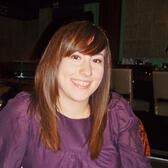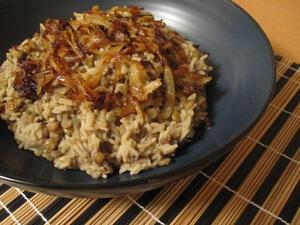Eating Jewish: Mengedarrah for Tisha B’Av
I wanted to write an Eating Jewish post about Tisha b’Av, yet as I started looking through my various cookbooks, I noticed that most of them had no mention of the holiday. It was often missing from the index and even recipes containing ingredients that would usually be included in a dish prepared on Tisha b'Av had no mention of it. I did find mention of Tisha b’Av in Gil Marks' Encyclopedia of Jewish Food, which devotes an entry to it (there’s a reason I’m constantly referring to this book) as well as in his cookbook The World of Jewish Food.
Despite having found a few recipes associated with this holiday, I was left wondering why so many cookbooks seem to skip over Tisha b’Av entirely. Termed as the saddest day on the Jewish calendar, it commemorates the destruction of the first and second Temples, both of which are supposed to have taken place on the ninth of Av, as well as other catastrophes that have befallen the Jewish community throughout history. It is an important day of commemoration, for not only did the Jewish community lose their central places of worship, but the destruction of the first Temple in 586 BCE changed the face of the Jewish community forever with the creation of the Jewish diaspora.
As I was reading the entry for Tisha b’Av in Gil Marks’ Encyclopedia of Jewish Food, I was surprised to discover that according to Marks there are no traditional foods for this holiday. During the three weeks prior, as well as before and after the fast on the day itself, meat is not consumed; therefore dairy and vegetarian meals are common. Foods associated with mourning are often eaten on this holiday. These usually consist of round foods that symbolize that life, like a wheel, is round. Two of the most well known examples of these foods are eggs and lentils.
In keeping with this custom, mengedarrah may be served at the Seudat Hamafseket (meal of separation) that is held right before the fast of Tisha b’Av beginning at sunset. This meal generally consists of one cooked food accompanied by bread. For Ashkenazim and for Sephardim this would usually be made up of a hard boiled egg and bread, or pita in the case of the latter. Some Mizrachim serve mengedarrah, which is considered to be one food despite being made up of rice and lentils, along with flatbread at this pre-fast meal. This dish can also be served at the meal to break the fast, which often includes dishes like Sephardic red lentil soup, Sephardic long-cooked eggs (huevos haminados), and Alsatian green lentil soup.
This is a simple dish to prepare, so simple in fact that in Jewish households throughout the Middle East, it was often served on Thursday night by housewives who were busy with preparations for Shabbat. Apart from the frying pan used to cook the onions, this dish comes together in one pot. You begin by boiling the lentils until they have softened but still retain some of their firmness. Then it is just a matter of adding the rice, half the cooked onions and some salt and pepper to the pot and letting the mixture cook until both the rice and lentils are completely tender. The dish is topped with the other half of the onions, which have been caramelized until they are dark brown and sweet. It is also common to serve plain yogurt alongside this dish, which is used as a topping.
This is a filling dish that can help sustain you through the fast and also provide the nourishment needed to break it. Whether eaten before or after fasting, perhaps it can become a traditional Tish b’Av dish in your own home.
Mengedarrah
Adapted slightly from Claudia Roden’s The Book of Jewish Food
4 large onions, cut in half and sliced thinly
1 ½ cups green or brown lentils
1 ¼ cups long-grain rice (I used basmati but another kind would work as well)
About 2 teaspoons salt
Pepper, to taste
About ½ cup olive oil, for the pan
-
Heat the olive oil in a frying pan, when it is hot add half the onions to the pan and fry until they are golden brown.
-
Rinse the lentils under cold water. Bring 4 ½ cups of water to the boil in a medium pot, add the lentils and cook for 15 minutes (you don’t want the lentils to be soft but rather they should retain some of their chewiness). Add the onions you have just cooked along with the rice. Season with salt and pepper and stir well. Put the lid on the pot and continue cooking the mixture for another 20 minutes or until the rice and lentils are tender, over very low heat. Add water to the pot if the mixture becomes too dry.
-
While the lentil and rice mixture is cooking, fry the remaining onions until they are dark brown and caramelized.
-
Serve the lentil and rice, hot or at room temperature, with the caramelized onions sprinkled on top. Plain yogurt can also be served alongside this dish.








If you want to search the web for it, other spellings are more common. http://en.wikipedia.org/wiki/M... I have always heard it pronounced with the accent on the second syllable, mu JAD da rah.